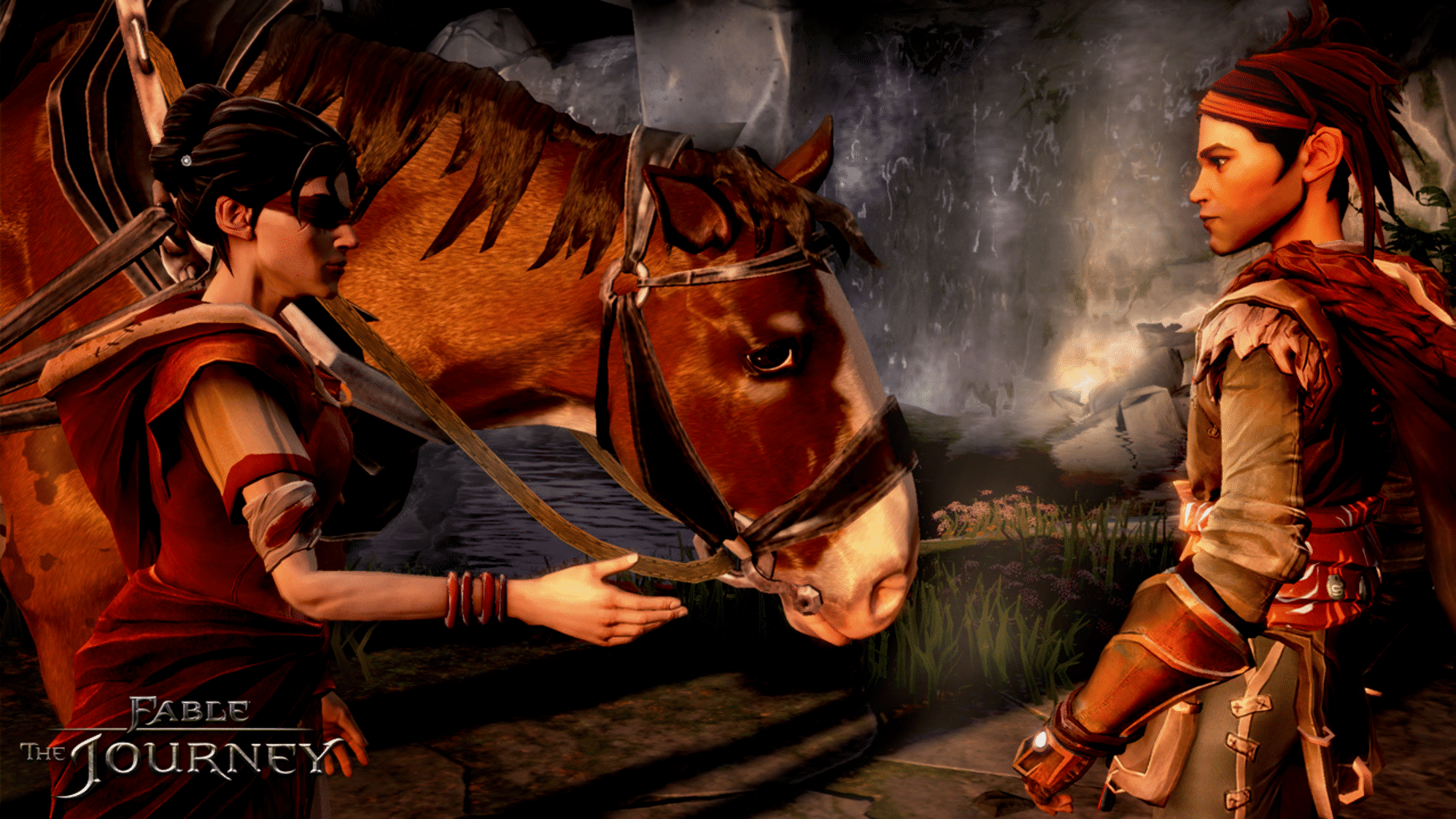

However, there will be many instances in combat where a spell flies exactly where you don’t need it. Early on in the game, the player is made to calibrate their aim by flinging bolts at all corners of the screen. While the defensive and voice commands of the game work very well, there are aim issues to be had with the right hand spell casting, and reaction issues with the horse controls. Now for the million dollar question of any Kinect game. And I guarantee that no player will be able to open a chest without holding their hands above their head Zelda style and saying “Da-na-na-naaaah!” Again, the Kinect directs actions such as pulling down an apple and holding it out to your horse. It is in these intermission areas where the player can help tend to their horse’s wounds, feed it, find treasure, and even do a little smithing. These gameplay sections are broken up by mini-games accessible in a rest stop. It’s not quite as tactical as saying “Garrus, overload!” or as epic as shouting a “FUS-RO-DAH!”, but it works. Voice commands are efficiently reactive when it comes to spell switching by a simple mention of the spell’s name. Players generally control Jedi-like push, pull and shield abilities with the left arm, while the right controls offensive spells, like bolt and fireball. Using both right hand, left hand and voice controls allows players to cast and scroll through a small library of available spells to do battle with many of the iconic Fable enemies such as Hobbes, Hollow Men and Balverines. However, for most players, the REAL game is to be found in the first person magic sections. The former section is about as interesting as it sounds, though many players will find themselves getting surprisingly immersed when it comes to the movement of the horse and carriage.

A majority of the gameplay time is divided between horse riding and magic-based first person shooting. Unlike its predecessors, Fable the Journey is the first of the Fable franchise to utilise a first person perspective. It comes as a small mercy of sorts (when compared to other Kinect titles like Star Wars), that the whole game can be played from the comfort of your seat, eliminating the need for the Kinect’s standard repertoire of “gimmicky jump” quicktime events and “step-left-step-right” mechanics. Interaction with the game is performed primarily through hand gestures. This both drastically changes the way the game is played and experienced, but also isolates the playership to only those who already own the camera attachment. First and foremost is the omission of the controller in favour of the Kinect system. So how exactly does Fable The Journey hold up in an increasingly sceptical market?įable The Journey does quite a number of things differently from the previous titles. There’s no doubt that the odds of receiving a favourable reception from the masses is stacked against it. Now, in 2012, Fable The Journey has hit the shelves of game stores around the world. This revelation was met with no shortage of groans of disdain from viewers around the world, as the Kinect was being increasingly shunned by the gaming masses. It was during Microsoft’s 2011 press event when the latest instalment in the franchise: Fable The Journey was announced, with the news that it would be a Kinect devoted title. However, the subsequent sequels to the original epic have been greeted with greater and greater levels of disappointment from fans for each successive game released.įable has started to become one of those franchises where the players aren’t sure whether they love it, hate it or just shrug at it with a colossal degree of indifference. Fable has since prided itself on its system of choice and consequence, and made the series one of the best selling exclusives on the Xbox and Xbox 360. Sufficed to say, the original claim was vastly exaggerated, but it did not deviate from the fact that Fable 1, and the subsequent expansion Fable: The Lost Chapters were genuinely epic games that provided very unique role play experiences. The gameplay premise behind the original Fable game was ambitious: to create a game that unlocked limitless, unrelenting possibilities, where no two play-throughs would ever be the same.


 0 kommentar(er)
0 kommentar(er)
